Read Reviews
The Best Paddle Mixers
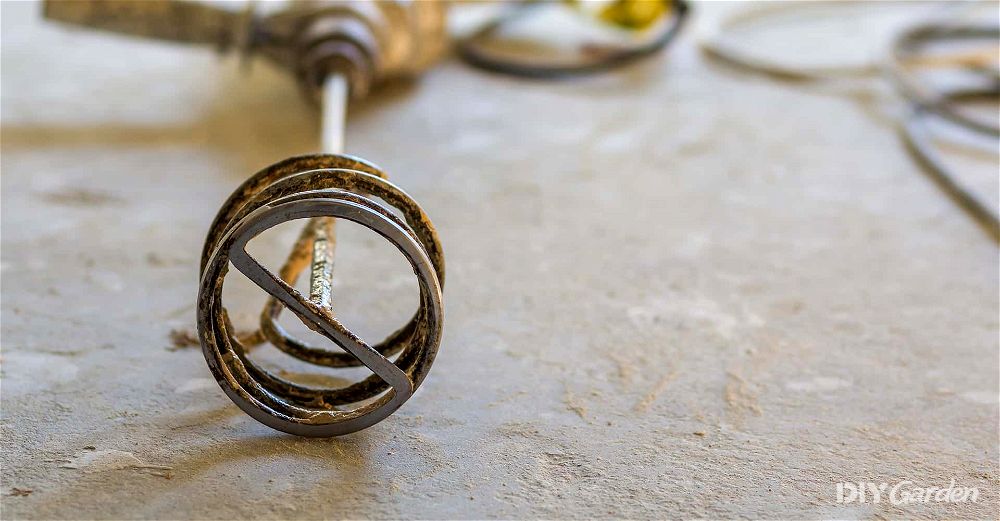
-
VonHaus Paddle Mixer Drill
-
Vitrex MIX850L Power Mixer
-
Dewalt DCD240N-XJ 54V XR FLEXVOLT Paddle Mixer
-
Bosch GRW 18-2 E Professional Paddle Mixer
-
Silverline 263965 DIY Plaster Mixer
Reviews
- Very low vibration so comfortable to use for long periods of time
- Works quickly and efficiently, without the noise of a cement mixer
- Good quality, durable build
- Soft start ensures there’s no sudden jolt of power and prevents splashing
- Easy to dismantle and clean after use
- No way to continuously control the speed of the mixer - just two gears
- Only mixes in one direction
Bridging the gap between budget and premium models, this VonHaus Paddle Mixer Drill is an affordable option whilst still coming from a well-known brand.
Powered by a 1600 W motor, it’s a corded model with 140 mm paddles and is ideal for mid-viscosity liquids like glue, paint, plaster and mortar.
There are two set speeds of either 680 rpm or 990 rpm to give more choice when mixing; however, unlike some of the models on this page, it’s not possible to toggle between the two speeds. They have to be selected individually.
The power is sufficient, with enough torque to work through stiff mortar, making this one of the best paddle mixers in terms of value for money. Whilst it may not have the professional-level capacity of some more premium models, it is sufficient for the majority of DIY tasks.
It’s most suited to mixing smaller loads, of around 25 kg at a time, which is why it might not stand up to more heavy-duty jobs.
Also, the power cable is only 2 metres long, which is a little on the short side. Depending on where the work is required to takes place, an extension cable may be required, which is not music to every DIYer’s ears.
As mentioned, the other disadvantage of this mixer is the inability to gradually build up speed. Whilst other models might have a variable dial, the single-select options make controlling the mix a touch harder.
Nevertheless, for the price, this model has enough going for it to forgive this shortcomings. It’s best suited for standard DIY use, and in these cases can be a useful tool to have on board without breaking the bank.
Did you find this review helpful?
- Lightest mixer on this page (just under 4 kg) making it easy to manage and handle
- Sufficiently powerful to mix cement, mortar and paint
- Low speed reduces mess and splash from mixing
- Has just one speed so may struggle mixing a large amount
- Lack of power means there may be a lot of product left on the paddle after use, which will need washing off
At 3.92 kg, the Vitrex MIX850L Power Mixer is extremely light weight and easy to handle.
It has an 850-watt motor, 120 mm head and maximum speed of 550 rpm.
This means it is relatively slow compared to other mixers on this page, which is reflected in the price. Despite this, it can still effectively mix mortar and cement, although it may struggle with higher-viscosity materials like glue.
For this reason, it’s one of the best paddle mixers for doing occasional DIY – especially when you don’t want to spend a lot on new tools – but it shouldn’t be relied upon for heavy-duty, professional-level jobs.
The handle is a little more basic than other machines, requiring hands to be positioned at different angles in order to hold the two padded areas. As mentioned though, this is a light machine so at least it shouldn’t be too difficult to control. The relatively low running speed can also help control the mixing, reducing mess as well.
However, another instance where the low speed can be a hindrance is during cleaning. Whilst machines with a high rpm will flick off substances stuck to the blade, allowing them to fall back into the bucket, the Vitrex MIX850L can struggle.
The machine also features a metal rest, which is designed to stop the blade from getting damaged when putting the mixer down.
Did you find this review helpful?
- Cordless so you don’t have the restrictions or hassle of a mains cable
- Lightweight at 6kgs - easy to use for long periods of time
- Dual handle with grips help to reduce user fatigue
- Comes with safety features including a safety lock off switch to prevent accidental starts
- No battery or charger included so a separate purchase is needed
If you’d prefer to have a cordless mixer, you’ll be pleased to learn that DEWALT have successfully created one as part of their XR FLEXVOLT line. The DCD240N-XJ Paddle Mixer comes as a bare unit, and can be used with the same interchangeable batteries as other DEWALT tools in the same range.
This means if you already own a drill, leaf blower, mitre saw or lawn mower with a 54 V XR FLEXVOLT battery, it can be transferred straight across into this paddle mixer. It’s a tactic that ultimately saves money in the long run.
With 54 V of power behind it, DEWALT claim that it achieves the same power as a corded machine – it certainly seems to perform well, with conservative battery usage and the ability to mix heavily viscous material.
There are five speed settings in total that can be adjusted using a dial on an upward-facing side of the handle. The speeds range from 300 – 725 rpm and can be easily altered whilst working, depending on the requirements of the material.
The dual-handle is coated with rubber to improve grip, its design helps to keep the tool balanced and level whilst working through tougher mixes like thick cement.
Due to its power and battery life, this is one of the best paddle mixers on the market if you’re looking for a cordless model. It’s sufficiently powerful not to make excuses for its cordless design, which means there’s actually not a lot of compromise that needs to be made between power and freedom.
Did you find this review helpful?
- Electronic speed control switch allows you to adjust the speed gradually whilst using the machine
- Has two gears, so you can mix materials of both high and low viscosities
- Double handles have a soft grip that helps reduce fatigue and keep control of the mixer
- Capable of mixing a large amount of liquid - up to 80 kg
- Trade-level machinery, not just casual DIY
- At just under 10 kg, this mixer is heavier than the others featured here
Bosch are pretty consistent when it comes to churning out quality tools, and their GRW 18-2 E Professional Paddle Mixer is no exception. There are no surprises – it works as you would expect, efficiently mixing mortar, paint, plaster and other viscous materials.
There are two gears, which sets it apart from the other Bosch mixers (such as their standard 12 E model). These gears result in different mixing speeds, so it can handle liquids with both a high and low viscosity.
The speed is changed using a button on the underside of the ergonomic bow handle, which means it’s easy to change whilst working to avoid excessive splatter. Much like using a food processor – there will be times when its helpful to move backwards and forwards between speeds during the same job. With this Bosch, that’s easily done.
Thanks to the rubberised coating on the handle, as well as its shape, it’s easy to grip whilst working giving good control over the machine.
Despite having a powerful 1800 W motor, the mixer doesn’t feel unwieldy; it can be kept stable and weighs just under 10 kg. This does, however, make it the heaviest model featured on this page. It’s a mains-powered machine, with a substantial 4 metre cable.
Overall, this is one of the best paddle mixers if you’re after something relatively large and powerful. The dual speeds make it easy to mix a range of materials and it’s a relatively heavy duty machine. As part of Bosch’s ‘blue’ range (as opposed to their ‘green’ range) it’s designed for trade and industry work.
Did you find this review helpful?
- Efficient and easy to use
- Powerful enough to mix cement and concrete
- Weighs just under 4 kg so it’s convenient to handle and control whilst mixing
- Soft start prevents splashing
- Good for small tasks but may not be suitable for large quantities of cement
- Need to be careful not to overload motor by adding too much dry material at a time
Whilst mixers can be expensive, this Silverline 263965 DIY Plaster Mixer is a great budget option that has been trialled by both professionals and DIYers alike.
In terms of performance, it’s capable of mixing most viscosities, including plaster and tile adhesive, creating smooth, lump-free results. Whilst it mixes slower than a lot of machines on this page, at 500 rpm, it will work well as long as it isn’t overloaded by adding too much in one go.
The 850-watt motor allows the mixer to work with relatively large loads, of up to 80 L.
Whilst there’s only one speed setting, it does feature a ‘soft-start’ function to prevent splashes when switching the machine on. The lower mix speed also generally helps reduce mess throughout.
The handles are positioned at right-angles to each other, which gives a different style of grip to the other paddle mixers on this page. As a 3.93 kg machine, it should remain relatively easy to control.
Paddle size is 120 mm, which seems standard for a lot of the lower-price models, and this is one of the best paddle mixers on the market if you’re working to a budget. If you are a professional, you might need something stronger that will work faster, but if you’re doing standard DIY around the home – this should be sufficient.
Did you find this review helpful?
How to Choose the Best Paddle Mixer
Whilst professional tradies will already be familiar with this particular tool, DIYers might not have fully unlocked the time-saving potential of the reliable paddle mixer.
Used to facilitate the mixing of cement, mortar, adhesive, paint and other viscous liquids, paddle mixers can save time, energy and money. They’re easy to transport, versatile, and often save the need for hiring larger mixers.
When choosing the best paddle mixer you should consider the power, speed and comfort of the item, particularly if it is required for regular use.
Selecting the Right Power
The power of the paddle mixer will determine how much product can be mixed and how quickly.
Paddle mixers for professional jobs will have around 1800 W of power. The more powerful a paddle mixer is, the more strength it will have behind its paddle. Whilst less powerful models may stutter when mixing highly-viscous liquids, larger motors should allow the paddles to power through.
For the most part, such large motors will only be required when mixing large amounts of thick liquid. The weight of the material being mixed will also put strain on the motor.
Lower-powered machines (~850 W) will be sufficient for most home DIY jobs like mixing plaster, paint, and smaller quantities of cement. Often, these machines are still pretty strong, they just work at lower speeds and take longer to power through.
You can also check the mixing capacity of the machine, which is normally stated in kg. This will determine the maximum amount of product that can be mixed at one time. Less powerful machines usually have a lower capacity.
The Importance of Variable Speeds
It’s useful for a paddle mixer to have variable speeds, although it’s not essential. Different speeds are appropriate for different materials and different stages of mixing. Much like using a cake mixer, there are times when it can be useful to speed up and slow down in order to remove lumps from the mix.
Plus, if a liquid has low viscosity, a lower speed can stop it from going everywhere.
Having a paddle mixer with higher speed settings can also help get jobs done quicker, which is more important for professionals or those working to a strict timescale.
The best paddle mixers have a soft start which can reduce mess and splashing when you start off (without this it can be easy to underestimate how quickly the paddle is going to turn).
Don’t Overlook Handle Comfort!
Most heavy-duty paddle mixers have twin handles – these are essential as the machines are quite heavy and can vibrate whilst in use.
Double, ergonomic, soft-grip handles can make it much easier to control powerful mixers and reduce the strain on arms and hands.
Many smaller mixers have less substantial handles, and normally require hands to be positioned at differing angles to each other. As long as the machine is sufficiently light, this should still be comfortable. Plus, with smaller machines you are unlikely to be holding them for as long, as they will be used for smaller jobs.
You should also look for an ergonomic handle with a rubberized soft grip for maximum control and comfort.
Paddle Mixer FAQs
How does a paddle mixer work?
Paddle mixers are used for the quick mixing of substances such as paint, plaster and mortar. They are more affordable than rotary mixers and suitable for working with smaller quantities.
Paddle mixers have rotating blades and often a couple of gears or speeds. They are powered by either electricity or petrol, with the electric mixers being either mains or battery powered.
They will quickly combine materials in order to create a smooth mix without lumps. Even with smaller jobs, this is something that can be hard to achieve by hand. Seeing as they can be used for so many different materials, they can be a useful tool to have around especially whilst refurbishing a house or garden.
Can I use a paddle mixer to mix concrete?
Yes, but it will depend on the limitations of your specific model. Whilst paddle mixers can be used to mix concrete, they won’t manage to mix large quantities. The ‘weight capacity limit’ of a model will indicate how much concrete it can mix. You’ll also need to make sure that you are being very thorough – directing the paddle into all parts of the container in order to effectively combine all of the materials. The effectiveness of a paddle mixer depends on how well it is used, as well as how powerful it is.
How powerful a paddle mixer do I need?
If you’re doing basic DIY jobs – a spot of plastering, a bit of painting, and maybe a small amount of cement mixing – you can achieve most of these with an 850 W paddle mixer. More powerful mixers will be require if you want to mix larger quantities of heavier material- especially if you want to work quickly.
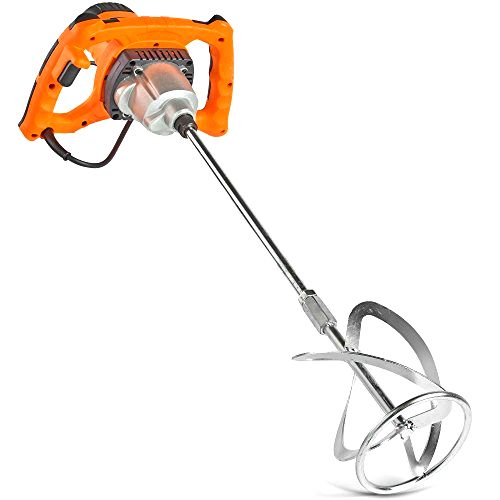
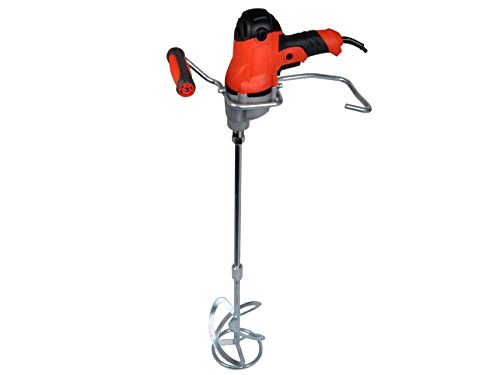

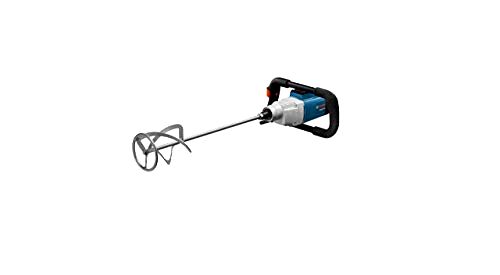
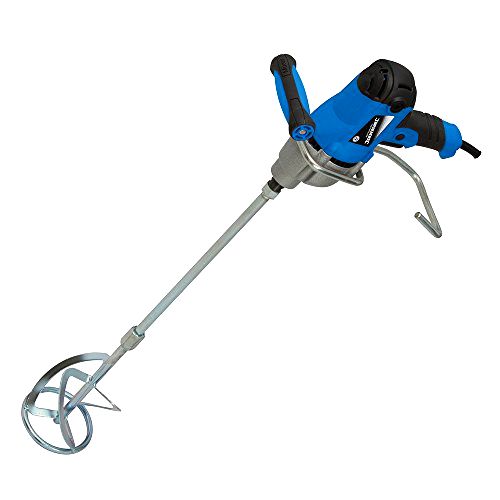

Share